
|
Blame the road, not the victim
|
Transportation professionals often assume that pedestrians won't walk more than a quarter mile to get to a transit station. Why then, do they expect people who ride a bus to walk half a mile out of their way to cross the street safely?
 In 2007, PEDS wrote to the Cobb County Department of Transportation to urge it to install median refuge islands on multi-lane roads that lack crosswalks near bus stops. Refuge islands increase safety by enabling pedestrians to In 2007, PEDS wrote to the Cobb County Department of Transportation to urge it to install median refuge islands on multi-lane roads that lack crosswalks near bus stops. Refuge islands increase safety by enabling pedestrians to- focus on one direction of traffic at a time
- cross in two stages, which requires shorter gaps in traffic
- have a safe place to wait in the middle of the road, with no risk from turning cars.
In the letter,
PEDS identified two locations where refuge islands would be especially helpful: Powder Springs Road near Booth Road, and
South Cobb
Drive, which the Atlanta Regional Commission had identified as two of the county's worst pedestrian
crash zones. A digitally-altered photo we enclosed showed how this low-cost safety improvement might look.
Unfortunately, Cobb County responded with a polite letter, but nothing else, and during the past two weeks, pedestrian-vehicle crashes occurred on both corridors. On November 14, a pedestrian was seriously injured on Powder Springs Road
near Booth
Road; three days later, four-year old Brandee Kellee lost her life while crossing South Cobb Drive with her mother and siblings to get to a bus stop.
After Brandee was killed, media headlines pointed out the family was not in a crosswalk. What crosswalk? As with many suburban bus stops, the nearest marked crossing on South Cobb Drive was over a thousand feet away. Using the crosswalk to get to the bus stop would have required the family to walk the equivalent of four city blocks -- something no pedestrian is willing to do.
Two agencies that attract transit users with special needs--Blind and Low Vision Services of North Georgia and the Smyrna Community Health Center--are located near the stop where Brandee was killed. With your support, PEDS is following up with state and county traffic
engineers to promote the use of refuge islands and HAWK signals at bus stops.
Crashes aren't accidents. There's nothing unexpected when pedestrians are killed or severely
injured crossing a high speed, multi-lane road that lacks safe
crossings where they're needed most. |
| 2008 Golden Shoe Award Winners | In a region dominated by cars, eight Golden Shoe Award winners are raising the bar and addressing the needs of people on foot. On November 5, PEDS presented the 9th annual Golden Shoe Awards to people, projects and
places that have contributed significantly this year to making metro
Atlanta safer and more accessible to pedestrians. Congratulations to our winners!
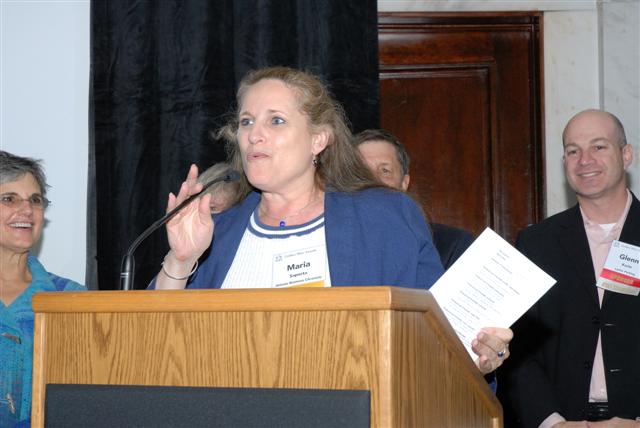 Pedestrian-friendly journalism: Maria Saporta received a special award from the PEDS board of directors saluting a new era in her career after 27 years at the Atlanta Journal-Constitution. Saporta's columns have become a powerful voice for smart growth and the importance of making Atlanta walkable. Pedestrian-friendly journalism: Maria Saporta received a special award from the PEDS board of directors saluting a new era in her career after 27 years at the Atlanta Journal-Constitution. Saporta's columns have become a powerful voice for smart growth and the importance of making Atlanta walkable.
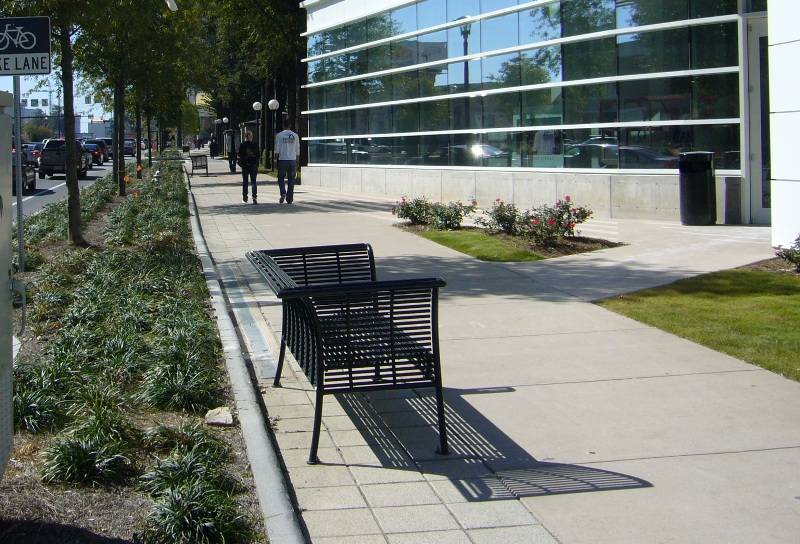 Pedestrian-friendly streetscape: Buckhead Community Improvement District and Georgia Department of Transportation,
for the Peachtree Boulevard Project, which features wide sidewalks, landscaped buffers, and bike lanes that separate pedestrians from
travel lanes, as well as a median that reduces the risk to pedestrians from
left-turning cars. Pedestrian-friendly streetscape: Buckhead Community Improvement District and Georgia Department of Transportation,
for the Peachtree Boulevard Project, which features wide sidewalks, landscaped buffers, and bike lanes that separate pedestrians from
travel lanes, as well as a median that reduces the risk to pedestrians from
left-turning cars.

Pedestrian-friendly road diet: DeKalb County Public Works Department, for reducing the number of travel lanes on Glenwood Road and reallocating the right of way to sidewalks and bicycle lanes.
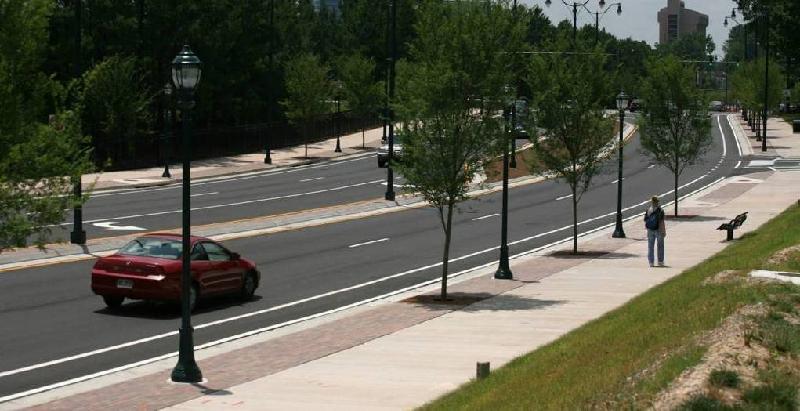 Pedestrian-friendly civic retrofit: Perimeter Community Improvement District,
for a pedestrian-friendly streetscape that connects to the Dunwoody
MARTA station and serves as a new "Main Street" for Perimeter Mall and
a catalyst for high density, mixed use development. Pedestrian-friendly civic retrofit: Perimeter Community Improvement District,
for a pedestrian-friendly streetscape that connects to the Dunwoody
MARTA station and serves as a new "Main Street" for Perimeter Mall and
a catalyst for high density, mixed use development.

Pedestrian-friendly traffic operations: City of Atlanta, Cobb, DeKalb, and Gwinnett counties, and others for installing countdown signals, which increase safety by giving pedestrians more information than traditional "flashing don't walk" signals.
 Pedestrian-friendly activism: Clifton Community Partnership,
for fostering community-wide engagement and developing a design
guidebook promoting increased connectivity, better pedestrian
infrastructure, and more housing within walking distance of jobs and
retail. Pedestrian-friendly activism: Clifton Community Partnership,
for fostering community-wide engagement and developing a design
guidebook promoting increased connectivity, better pedestrian
infrastructure, and more housing within walking distance of jobs and
retail.
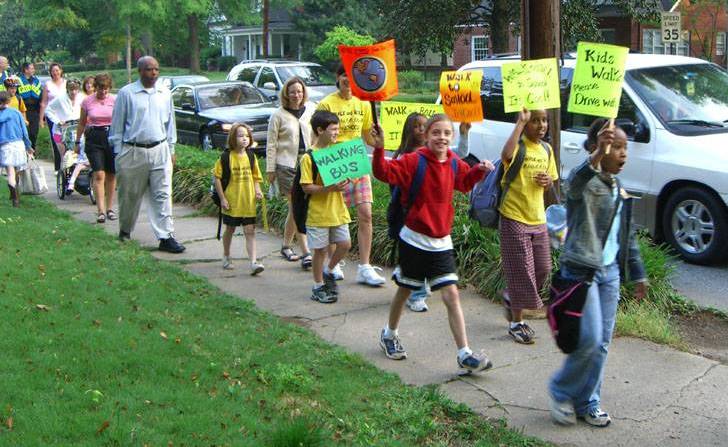 Pedestrian-friendly schools: City of Decatur,
whose Active Living Division expanded and institutionalized its Safe
Routes to School program after the Atlanta Bicycle Campaign completed a
pilot project encouraging students to walk and bike to school. Pedestrian-friendly schools: City of Decatur,
whose Active Living Division expanded and institutionalized its Safe
Routes to School program after the Atlanta Bicycle Campaign completed a
pilot project encouraging students to walk and bike to school.
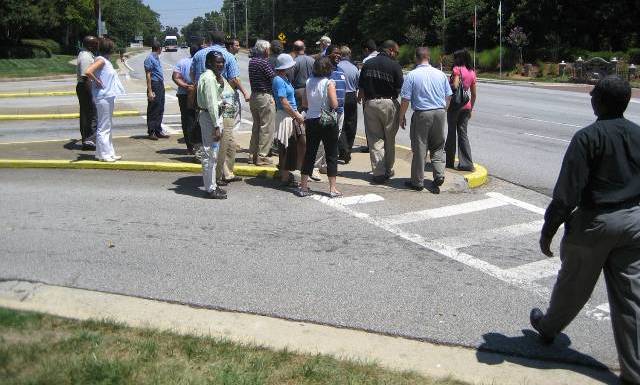 Pedestrian-friendly education: Federal Highway Administration,
for identifying Georgia as a "focus state" for pedestrian safety and
funding three "Designing for Pedestrian Safety" workshops that trained
125 metro Atlanta transportation professionals. Pedestrian-friendly education: Federal Highway Administration,
for identifying Georgia as a "focus state" for pedestrian safety and
funding three "Designing for Pedestrian Safety" workshops that trained
125 metro Atlanta transportation professionals. |
Job Opening at PEDS
|
PEDS is hiring a part-time Program Assistant to perform clerical and
non-clerical assignments in support of our programs and administration.
If you're interested in pedestrian-friendly neighborhoods, healthy
communities, fewer cars and safer walking, this may be the position for
you. Check out the qualifications and how to apply.
|
|